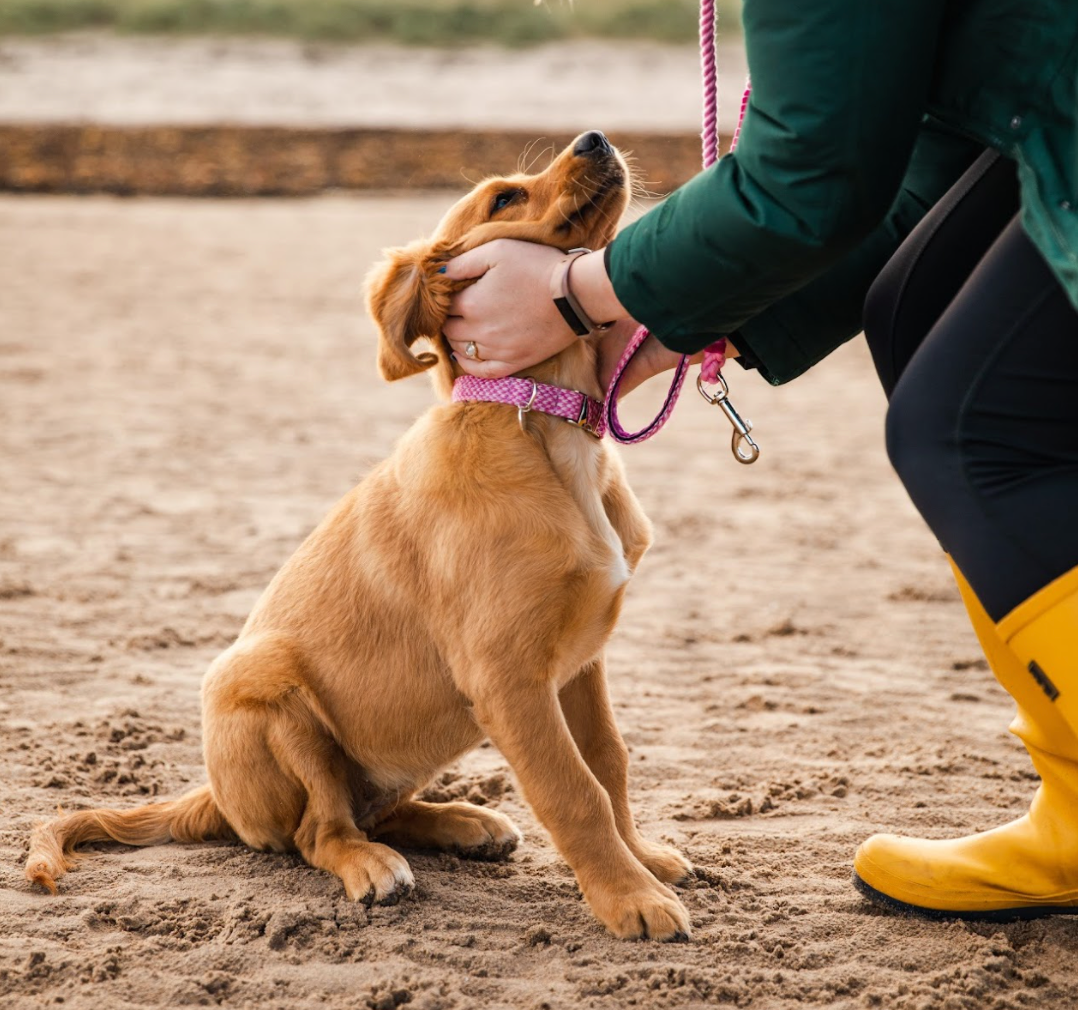
Positive Reinforcement Dog Training
Share
As they say in the old Guinness commercial, Good things come to those who wait (or stay, paw, lie down, roll over, speak etc.).
It is widely accepted that Positive Reinforcement is the best route to take when It comes to training your dog, whether this as a pup or just a general form of training throughout your dog’s life. Positive reinforcement involves rewarding your dog when it exhibits good behaviour with treats, strokes or verbal cues therefore making this behaviour more likely as the dog begins to associate it with a treat.
There are many reasons why positive reinforcement is the best form of training but most importantly:
- Its fun for you and your dog, and builds a bond
- It can encourage dogs to build confidence
- The science confirms it’s the best way for dogs to learn.

What does your dog like?
Whether it’s treats, toys or attention figure out which your dog likes the most but make sure to use all options available as if it’s the same reward every time your dog could become bored of it. For most dogs, treats are the strongest tool but over time be sure to use toys or attention as a sign of a job well done. It is also important to use each type of reward in certain circumstances.
For example if you’re out on a walk, your dog is probably no longer interested in a toy as it has many other stimulants around it so treats may be the best option. If you’re at home, a chew toy may now be the better reward to use over treats as you’re generally not looking for the instantaneous reward of a single treat, you’re looking for more longer term stimulation or distractions which a chew toy can provide.
YES! Reward for Good behaviour
If your dog is acting in the way you like, whether it’s being calm and relaxed indoors or sitting when you ask it to, be sure to reward your dog as they do it. There is no point in rewarding a dog for sitting a few minutes after they’ve stood back up again as they no longer associate that treat with sitting. In order to have your dog associate the treat with the specific behaviour it has to be given at the time of the behaviour. It can be useful to have a marker to signal to your dog that they have been successful and that they’re about to get a treat. Some people use short and sharp words like Yes! or Nice! which you can use as the dog exhibits the behaviour, signalling to them that the treat is on it’s way.

Appropriate Praise
Another tip is to match the praise with the activity. If your dog is relaxing inside, maybe give it some calming praise or slow strokes. If your dog sits at your feet while it’s out on a walk or playing, you can be a bit more energetic in your praise as your dog is already excited and having fun. If your dog is relaxing indoors and you suddenly start screaming GOOD BOY excitedly then the dog is no longer relaxed, tone of voice is very important in dog training.

Correcting bad behaviour
Positive reinforcement can also be used to correct bad behaviour by redirecting your dog into a more desired activity. If your dog is jumping up for example, you can ask it to sit which is then followed by a marker or treat but be sure to have your dog sit still before giving the treat to ensure it is no longer associating it with the previous bad behaviour of jumping. This goes back to the initial point of positive reinforcement making the desired behaviour more likely to happen.
Negative Reinforcement
Research shows that negative reinforcement (‘rub the dogs nose in it’ or slaps on the nose for example) is much less effective and can actually increase anxiety and aggression in dogs. A study on negative reinforcement showed that the use of this training led to an increased risk of aggression by 2.9x. A far more affective way to training your dog is positive reinforcement, emphasising the good behaviour you desire therefore making it more likely to occur over time.
This is of course easier said than done at times but dogs have a short attention span so punishing them for a toilet roll they shewed up hours ago won’t be affective. Prevention and redirection are two better ways to deal with the issues our beloved dogs may cause from time to time.
